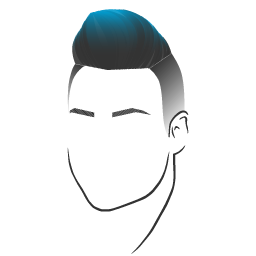READ:
- Sara Ahmed, “Introduction: Find Your Way,” from Queer Phenomenology: Orientations, Objects, Others (Durham: Duke University Press, 2006), 1-21.
- Jack Halberstam, “Low Theory,” from The Queer Art of Failure (Durham: Duke University Press, 2011), 1-25.
- (optional) Sara Ahmed, “Conclusion: Disorientation and Queer Objects,” from Queer Phenomenology: Orientations, Objects, Others (Durham: Duke University Press, 2006), 157-179.
1/30 Queer Archives: Compulsory Heterosexuality & Lesbian Existence
VIEW (on Amazon Prime): The Hours (Stephen Daldry, 2002, 114’) Amazon | iTunes
READ: Adrienne Rich, “Compulsory Heterosexuality and Lesbian Existence,” in Signs 5.4 (1980): 631-660.
2/3 Queer Archives: AIDS & Viral Visuality
DUE: Reading Reflection 3
- Regarding the reading by Bersani:
- Summarize three ways he describes the visuality of HIV/AIDS (e.g. in relationship to shame, public spectacle, etc.)
- Describe at least one connection between his descriptions of HIV/AIDS and the film BPM.
- Provide at least one connection between the film BPM and another course concept we have addressed or read about this semester (e.g. regarding M4M sexuality, queer visibility/failure, etc.)
VIEW (on Hulu): BPM / 120 Battements Par Minute (Campillo, 2017, 143′) Amazon | iTunes
READ:
2/6 Queer Archives: Print & Pulp
READ:
- anonymously by queers, “Queers: Read This,” (1990/2009)
- Selections from Justin Hall, No Straight Lines (Fantagraphics, 2013)
2/10 Queer Archives: Something is Burning
VIEW (on Netflix): Paris is Burning (Livingston, 1990, 71′)
READ: bell hooks, “Is Paris Burning?” from Reel to Real: Race, Sex and Class at the Movies (New York: Routledge, 2009 [1996]), 275-290.
2/13 The Politics of Sex(uality): (Homo)Normativity and LGBTQ Politics
DUE: Reading Reflection 4
- Provide a 1-2 sentence, paraphrased summary of the following political groups/terms:
- The Anti-Gay Right
- The Gay Right
- Homonationalism
- Gay Social-Liberalism
- Unqueered Left
- Create a thought problem about Neoliberalism. Aim for your thought problem to address how Neoliberalism influences contemporary LGBTQ identities or politics. Refer back to RR #1 for specific tips about writing thought problems
READ: Peter Drucker, “The Sexual Politics of Neoliberalism,” from Warped: Gay Normality and Queer Anti-Capitalism (Leiden: Koninklijke Brill, 2015): 279-304.
2/17 President’s Day, no classes
2/20 Gay Television and Straight America
VIEW (via digital file from Prof. Cannon): “Premiere,” Queer as Folk (S01E01, 2000, 48′) AND “Queer, There, and Everywhere,” Queer as Folk (S01E02, 2000, 44′) Amazon | iTunes
READ:
- Ron Becker, “Straight Panic in the 2000s,” from Gay TV and Straight America (New Brunswick: Rutgers University Press, 2006), 214-225.
- Selections from “Queer TV Style” GLQ 11.1 (2005): 95-117. [NOTE: These readings, like the chapter by Becker, do not directly respond to Queer as Folk, but provide insights about critical reactions to LGBTQ representations on TV at the turn of the century]
2/24 Gay Lesbian Television and Straight America
DUE: Reading Reflection 5
- Summarize (meaning, paraphrase) why The L Word is distinct from New Queer Cinema.
- Based upon the readings by Aaron and Becker, give your opinion about the ways gay or lesbian (and/or bi, trans, etc.) television programming has or has not changed since the early/mid-2000s.
- Provide 1-2 sentences describing if/how representations of lesbians in The L Word: Generation Q differ from what we saw in the pilot of Queer as Folk and/or in the pilot of the original The L Word series.
VIEW:
- (on Amazon): “Let’s Do it Again,” The L Word: Generation Q (S01E01, 2019, 55′) [watch the entire episode]
- (on Netflix): “Pilot: Part 1,” The L Word (S01E01, 2004, 52′) [watch at least the first few scenes to get an idea about what types of changes were made in the reboot (e.g. casting); preferably: watch the entire episode]
- (optional) “Pilot: Part 2,” The L Word (S01E02, 2004, 44′)
READ: Michele Aaron, “New Queer Cable? the L word, the small screen and the bigger picture,” in Reading the L Word – Outing Contemporary Television, eds. Akass and McCabe (London: I.B. Taurus, 2006), 33-39.
2/27 Bisexuality: (Non-) Visibility and (Mis-) Representation
VIEW (on Netflix): “Both Sides Now,” Eastsiders (S04E05, 2019, 53’).
READ:
3/2 – 3/6 Spring Break, no classes
3/9 Contemporary Queerness: Quare’ing Queer Studies
DUE: Reading Reflection 6
- Describe what Johnson means by “Quare” and, by extension, how it is understood in the context of “quare studies.”
- Johnson describes various ways race becomes a problem (“race trouble”) within queer theory. Paraphrase 2-3 ways he describes race being excluded or invalidated by early queer theories.
- One of the benefits from “looking” or “feeling” backward is our ability to assess if or how the world has changed (for better or for worse). In this regard, Johnson offers us a “postscript” with insights about how he would describe the role of race in queer theory after interventions like his. From the postscript, describe what (if anything) has changed?
VIEW (on Netflix): Moonlight (Jenkins, 2016, 111′)
READ: E. Patrick Johnson, “‘Quare’ Studies, or (Almost) Everything I Know About Queer Studies I Learned from My Grandmother,” in The Ashgate Research Companion to Queer Theory, eds. Giffney and O’Rourke (Farnham: Ashgate Publishing, 2009), 451-469.
3/12 Contemporary Queerness: The Burning Returns, and You Better Live…Work…Pose!
VIEW (on Netflix): “Love is the Message,” Pose (S01E06) AND a second episode of your choice.
TRANSITION TO ONLINE CLASSES
Week 11 (3/16-3/20) Catchup and Research Paper Proposals
3/19: Test Skype Session (11:45am EST)
3/20: E-mail Prof. Cannon your research paper topic
Week 12 (3/23-3/27) Trans* (Non-) Visibility and Representation
WEEKLY UPDATE [PDF]
3/26: Skype Group Session (11:45am EST)
EV’S PRESENTATION:
- Handout [PDF]
- Southern Comfort (Kate Davis, 2001) is a documentary about Robert Eads’s last year before his death from ovarian cancer. Access the clip on YouTube (8:50-16:00)
VIEW:
READ:
- Elspeth H. Brown and Sara Davidmann, “Queering the Trans* Family Album” Radical History Review 122 (2015): 188-200.
- Patrick Strudwick, “This Trans Guy Took a Selfie Every Day for Three Years to Show How His Face Changed,” BuzzFeed, October 7, 2015.
- blaqueer, “The Fat Boi Diaries: Why Selfies?” BLAQUEER: Wine not Whine. Fat, Black, Queer, Scholar, so (un)screwed, March 16, 2013.
Week 13 (3/30-4/3) Online Sexuality/Sociality
WEEKLY UPDATE [PDF]
3/30: Research Paper Draft Due
4/2: Skype Group Session (11:45am EST)
KATELYN’S PRESENTATION:
- Handout [PDF]
- “If guys acted in real life the way they do on gay apps,” Jack’d (2015). Available on YouTube.
READ: F. Hollis Griffin, “Wanting Something Online,” from Feeling Normal: Sexuality and Media Criticism in the Digital Age (Bloomington: Indiana University Press, 2016), 140-168.
MEDIA:
- LGBTQ social/dating app interfaces [in Weekly Update].
- “Episode 1,” Hunting Season (2016, 10’) the censored version is available for free on Vimeo.
- “Online Dating,” Boxed In (2014, 3’) on IFC.
- “Oops,” Trans Monogamist (2019, 7’) on YouTube.
Week 14 (4/6-4/10) Playing Queer(ly)
WEEKLY UPDATE [PDF]
4/9: Skype Group Session (11:45am EST)
BRIANNE’S PRESENTATION:
READ:
- Jack Halberstam, “Queer Gaming” and “The Arts of Failure,” in Ruberg & Shaw (eds.) Queer Game Studies (Minneapolis: University of Minnesota Press, 2017), 187-210.
- (optional) Kathryn Bond Stockton, “If Queer Children Were a Video Game,” in Ruberg & Shaw (eds.) Queer Game Studies (Minneapolis: University of Minnesota Press, 2017), 225-239.
- (optional) Gregory L. Bagnall, “Queer(ing) Gaming Technologies: Thinking on Constructions of Normativity Inscribed in Digital Gaming Hardware,” in Ruberg & Shaw (eds.) Queer Game Studies (Minneapolis: University of Minnesota Press, 2017), 135-144.
MEDIA: A selection of video games is provided in the Weekly Update. Students with access to required hardware/content are asked to play a “collective list” of games first; students without access to required hardware/content are provided with game play videos as an alternative. I encourage everyone to expand the game play exploration to other games in the lists (or to others you consider applicable to the topic at hand).
Week 15 (4/13-4/17) Finals
4/17: Final Research Paper Due, uploaded to Blackboard before 11:59pm EST

